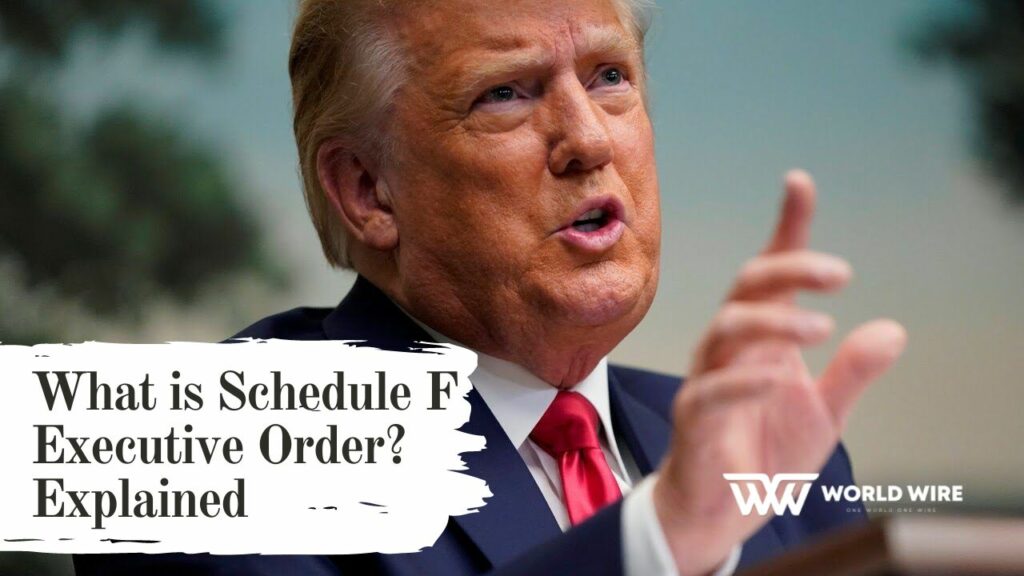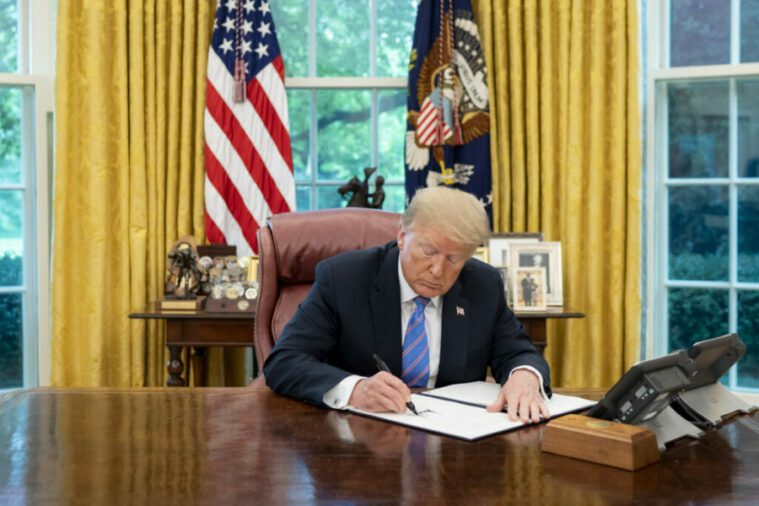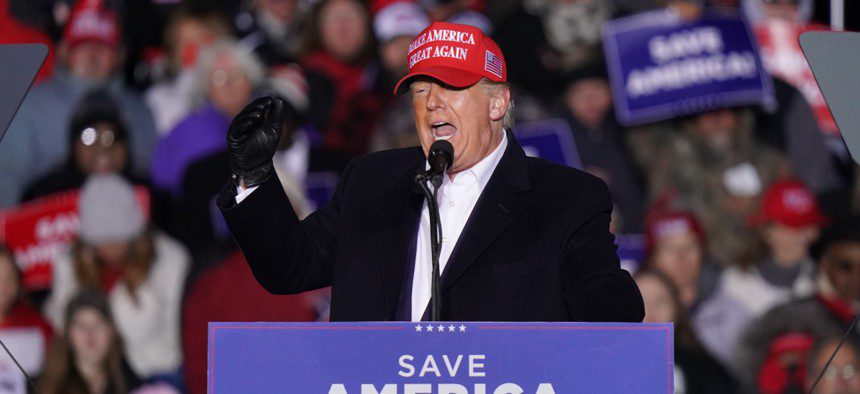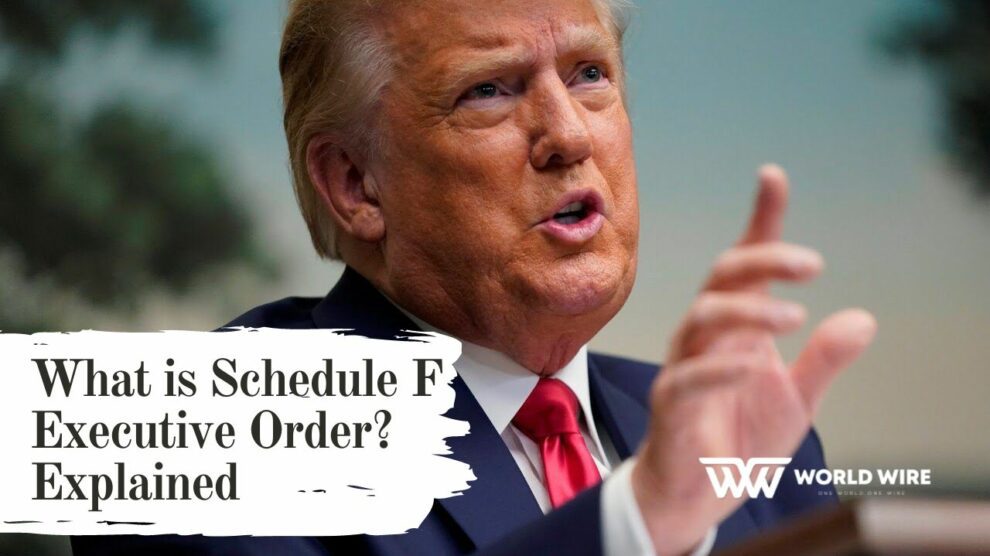A Schedule F Executive Order was a job classification in the United States federal civil service that included policy-making posts. It was established by President Donald Trump’s Executive Order 13957 on October 21, 2020, less than two weeks before the 2020 elections. President Joe Biden canceled it by presidential decree on January 22, 2021.
Employees classified as Schedule F would not have been subject to the Civil Service Rules and Regulations, including due process and possibly collective bargaining rights.
Appointees, on the other hand, cannot be discharged based on protected statuses such as whistleblower status, partisan affiliation, or claiming discrimination or harassment.

The directive aims to increase recruiting and firing freedom to improve performance management and accountability.
Schedule F posts are “positions of a confidential, policy-determining, policy-making, or policy-advocating nature that are not generally subject to change due to a Presidential transition.” The Executive Order specifies many characteristics of jobs that may be classified as Schedule F:
- Meaningful involvement in policy advocacy, development, or formulation, particularly in the formation or drafting of rules and advice
- Significant policy-related job at an agency or component that primarily focuses on policy
- the supervision of lawyers
- Significant latitude in determining how the agency performs responsibilities delegated to it by law
- Engaging with non-public policy proposals or deliberations that are under the purview of deliberative process privilege, and either:
- Directly reporting to or routinely working with an individual chosen by the President or an agency head paid at the GS-13 level or higher, or working in the agency or component’s executive secretariat conducting specific collective bargaining negotiations on the agency’s behalf.
According to the Office of Personnel Management (OPM), these requirements are guidelines since not all posts covered by them must be transferred to Schedule F, and positions not covered by them may be converted.
These are broad enough to include many leading scientists, lawyers, regulators, public health professionals, and others. According to estimates, they cover tens of thousands to hundreds of thousands of employees.
Book Tickets for CPAC Texas 2022 – Full Guide
The Executive Order also establishes transition processes for transferring covered positions from competitive service to Schedule F, requiring executive agency heads to submit a list of positions to be converted along with a written justification to the OPM director. The OPM Director has exclusive authority to grant or deny the petition.
Origins of Schedule F Executive Order
Schedule F was conceived in January 2019 by a little-known official working within the Eisenhower Executive Office Building, a magnificent Second Empire-style structure across the street from the White House.

For months, James Sherk, an entrepreneurial conservative ideologue on Trump’s Domestic Policy Council, had been raging about career employees across several agencies he claimed were purposefully obstructing Trump’s program.
He’d heard accounts from his coworkers and had firsthand experience with elements of the opposition. Within the State Department, there was a revolt against Trump’s draconian refugee policies.
The uprising was so strong that The Washington Post published an article 11 days after Trump took office detailing “a swelling surge of dissent from federal workers” tasked with carrying out Trump’s objectives.
Sherk began researching federal statutes on Cornell Law School’s website from his standing desk within the EEOB. He read Title 5, the section of the United States Code that governs government personnel and agency operations. He was looking for gaps in the legislation that may allow a president to terminate career government officials with protections that made firing them difficult and time-consuming.
Sherk investigated the history of federal labor laws. In 1883, Congress passed the Pendleton Act to improve the government. The purpose of this statute was to replace the patronage system with a neutral civil service that would work throughout administrations, regardless of which political party was in power. The goal was to establish a professional civil service. The notion was that these government employees would amass essential institutional knowledge and experience throughout their careers, which would help both Republican and Democratic presidents.
However, Sherk revealed that the Pendleton Act did not include the numerous removal safeguards that have made it difficult for modern presidents to fire federal workers. Through his study, Sherk discovered that such appeals rights were added considerably later, in a succession of legislation and presidential orders passed between the 1940s and the 1970s.
Sherk agreed with many conservatives that the “nonpartisan” system aided Democratic presidents while impeding Republicans.
He could use campaign donations — which trend Democratic among federal government employees — to argue that the federal bureaucracy, far from being apolitical, had too many embedded Democrats attempting to undermine Republican governments.
Check, | Steps to watch CPAC Texas Livestream
In his capacity at AFPI, Sherk has issued a lengthy study called “Tales from the Swamp” since leaving government, documenting how federal bureaucrats across numerous departments, including Labor and Justice, fought to adopt Trump policies.
During a Rally at Arizona, Trump Promoted Schedule F Executive Order
According to excerpts by Axios, former President Trump wants to praise his “Schedule F” executive order — and call on Congress to grant the President broader power to fire federal employees — in speeches set to be delivered in Florida on Saturday evening.

The former President’s fresh campaign against federal employees comes after Jonathan Swan’s two-part Axios investigative series, “Inside Trump ’25,” revealed his aides’ plans to make the problem a focal point if he wins a second term.
Why it matters: By directly elevating Schedule F, Trump is ratcheting up efforts from well-funded outside allies to oust career public servants if he retakes power.
According to the extracts, Trump planned to address a Turning Point rally in Tampa, “To empty the swamp, we need to fire the swamp.”
Trump will remark in his address that he wants expanded presidential powers so that “any bureaucracy which is corrupt, stupid, or superfluous may be told: ‘You’re fired!'”
Schedule F Executive Order, which President Biden revoked on his second day in office, was largely unknown to the general public. Trump is now attempting to turn it into a prominent applause line as speculation grows that he may announce a presidential run in 2024.
Table of Contents







Add Comment